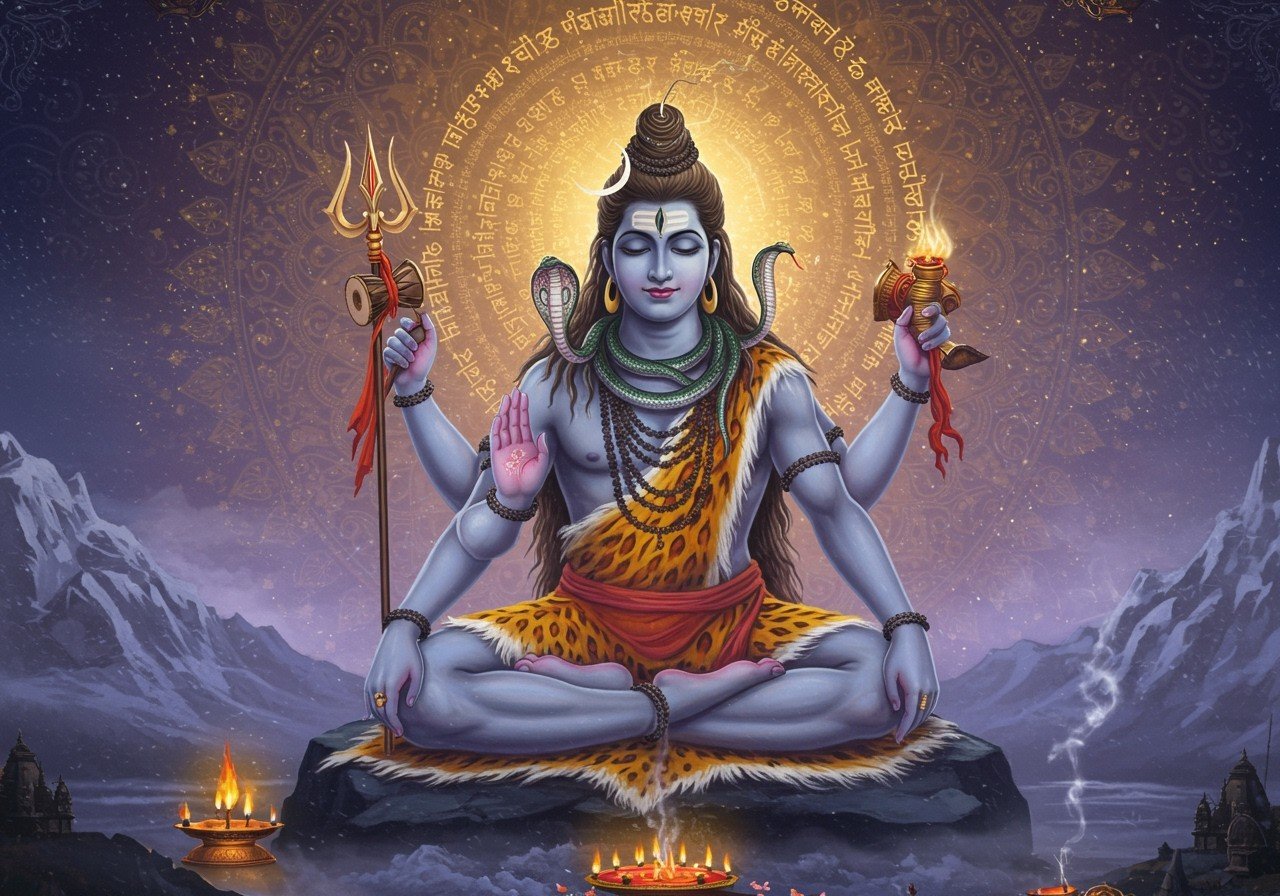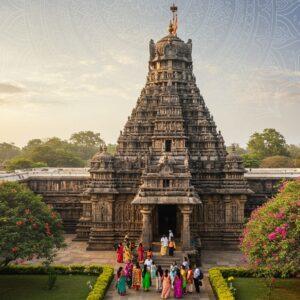
The Shiv Chalisa, a powerful hymn reverberating with devotion to Lord Shiva, holds profound spiritual significance for Hindus. Recited daily in countless homes and temples, it’s a cornerstone of personal prayer and communal worship. This exploration delves into the nuances of the Shiv Chalisa, examining the subtle variations in wording and interpretation that have emerged across different regions and traditions. By understanding these variations, we gain a richer appreciation for the cultural tapestry and spiritual depth woven into this beloved hymn. Let’s embark on this enlightening journey together.
Historical Background of Shiv Chalisa
The Shiv Chalisa is rooted in the ancient tradition of Hindu devotional literature, echoing through centuries of spiritual practice. While its authorship remains a topic of discussion, its connection to the revered saint Tulsidas is often acknowledged. The Chalisa emerged from a specific socio-religious context, reflecting the beliefs and practices of its time. It continues to hold a special place of honor during significant festivals like Maha Shivaratri, where its recitation unites devotees in shared reverence. The evolution of the Shiv Chalisa through time is a testament to its enduring power and relevance in Hindu rituals.
Understanding the Variations in the Shiv Chalisa
The Shiv Chalisa, a beautiful hymn of devotion to Lord Shiva, maintains a consistent core structure. It’s traditionally composed of 40 verses, or “chaupais,” each carefully crafted to praise and invoke the blessings of Lord Shiva. Believed to be adapted from the revered Shiva Purana, the Chalisa usually begins with an invocation to Lord Ganesh, seeking his blessings before addressing Lord Shiva. Across various renditions, the central purpose of the Shiv Chalisa remains constant: to express deep adoration for Lord Shiva and seek his divine grace.
What Creates the Perception of Variations?
While the core of the Shiv Chalisa remains remarkably consistent, subtle variations exist, giving rise to the perception of different versions. One key factor contributing to the perception of variations is the personal touch of individual reciters and singers. Each brings their unique style, intonation, and emotional depth, creating distinct listening experiences.
Translations and transliterations into different languages also play a significant role. Subtle differences in wording arise as translators strive to capture the essence of the original text while adapting it to the nuances of various languages. This linguistic diversity enriches the Shiv Chalisa, allowing it to resonate with people from diverse cultural backgrounds.
- Regional Influences: Minor textual differences can also emerge due to regional variations in language and pronunciation. While the core message remains intact, the specific wording of some verses may vary based on regional influences.
- Additional Devotional Materials: Another element contributing to the perception of different versions is the occasional inclusion of supplementary devotional materials alongside the Shiv Chalisa. These additions might include aartis, stutis, mantras, and explanations of the verses, enriching the spiritual experience.
Key Verses and Their Meaning
Several key verses are commonly found in most versions of the Shiv Chalisa. These verses carry profound meanings, touching the hearts of devotees:
- “Jai Ganesh Girija Suvan, Mangal Mul Sujan”: This opening verse pays homage to Lord Ganesh, the son of Goddess Parvati (Girija), who is revered as the remover of obstacles and the embodiment of wisdom and auspiciousness. It sets a tone of reverence and devotion at the very beginning of the Chalisa.
- “Jai Girija Pati Dinadayala Sada Karat Santan Pratipala”: This verse praises Lord Shiva as the compassionate husband of Parvati, the one who always protects his devotees. It highlights Shiva’s benevolent nature and his unwavering support for those who seek his refuge.
- “Shankar Ho Sankat Ke Nashan, Mangal Karan Vighna Vinashan”: This powerful verse hails Lord Shankar (Shiva) as the destroyer of troubles and the remover of obstacles. It emphasizes Shiva’s role as a divine protector, offering solace and strength to those facing difficulties.
- “Namo Namo Jai Namah Shivaya, Sur Brahmadik Paar Na Paya”: This verse is a profound salutation to Lord Shiva, acknowledging the immensity of his being. It recognizes that even the highest gods, such as Brahma, cannot fully comprehend Shiva’s greatness.
You can find a deeper explanation of these verses and many others, along with beautiful depictions of Lord Shiva, in our blog post Ramcharitmanas: A Deep Dive into Devotion and Epic Narrative.
Exploring the Meaning of Shiv Chalisa
The core themes woven throughout the Shiv Chalisa revolve around devotion, protection, and the pursuit of wisdom. Each verse is imbued with symbolic meaning, inviting devotees to connect with their inner selves and embark on a journey of self-discovery. While interpretations might vary slightly based on linguistic and cultural contexts, the Chalisa serves as an invaluable tool for daily prayer and deep meditation.
Reciting the Chalisa is a pathway to inner peace and spiritual reflection. Its use in meditation encourages a profound connection with Lord Shiva’s divine attributes and the transformative stories that surround him. As a guide for devotees, the Shiv Chalisa illuminates the path towards a deeper understanding of the divine and elevates spiritual practice.
Shiv Chalisa and Aarti: A Complementary Pair
The Shiv Chalisa is often recited in conjunction with the Aarti, a ritual offering of light using wicks soaked in ghee or camphor. Together, the Chalisa and Aarti create a holistic and immersive devotional experience. The Aarti beautifully complements the Chalisa by engaging the senses, adding an element of visual and olfactory richness to the spiritual atmosphere. This combination deepens the connection with Lord Shiva, fostering a profound sense of devotion and reverence.
Cultural Significance of Shiv Chalisa
The Shiv Chalisa holds immense cultural significance, acting as a powerful vehicle for preserving Hindu traditions and transmitting religious teachings from one generation to the next. It imparts knowledge about Lord Shiva’s attributes and narrates the sacred stories that surround him, deepening the spiritual understanding of devotees. Its influence extends beyond the realm of personal devotion, inspiring artistic expression in various forms, including music, art, and literature. By exploring these artistic interpretations, we uncover deeper layers of India’s vibrant cultural heritage.
How Poojn.in Can Enhance Your Connection with Lord Shiva
At Poojn.in, India’s leading online store for cultural and religious items, we understand the importance of authentic puja items. We make it easy for you to deepen your connection with Lord Shiva by providing a wide selection of high-quality products:
- Shiv Chalisa Books: Find authentic printed versions of the Shiv Chalisa in multiple regional languages, allowing you to connect with the hymn in a way that resonates with you. Check out our collection here.
- Complete Shiv Puja Sets: Our complete puja sets contain everything you need for a reverent Shiv puja, taking the guesswork out of gathering the necessary items. This Dashakarma kit is a great example.
- Items for Abhishek: We offer a variety of pure copper and brass items specifically designed for Shiva abhishek, enhancing the sanctity of your rituals. This Ganga Shiva Murti is ideal for abhishek rituals.
- Premium Puja Materials: Source premium quality bel patra, rudraksha, dhoop, and deep, ensuring the purity and authenticity of your offerings.
- Specialized Shiva Worship Items: We offer a curated selection of specialized items like panchamrit containers, abhishek vessels, shivling bases, and sacred thread (janeu) to complete your Shiva puja with utmost reverence. This Marble Dust Murti of Mahadev is a beautiful addition to your altar.
Order these items conveniently through our website or connect with our knowledgeable team for personalized guidance. We’re happy to assist you in selecting the perfect items for your puja needs. Reach us at 03369029784 or WhatsApp 9476142738 for personalized assistance.
Conclusion: Embracing the Timeless Devotion of the Shiv Chalisa
The Shiv Chalisa is more than just a hymn; it’s a spiritual companion, guiding devotees on their journey of faith. It transcends the boundaries of language and time, resonating deeply with those who seek solace, protection, and wisdom. While minor variations may exist, the core message of devotion remains unwavering, connecting devotees with Lord Shiva’s boundless grace.
Reciting the Chalisa, especially when paired with the Aarti, creates a deeply enriching spiritual experience. This combined practice fosters a profound connection with the divine, bringing peace and meaning to daily prayers. The Shiv Chalisa’s cultural significance ensures that its wisdom continues to inspire generations, safeguarding the essence of Hindu spirituality.
By embracing the Shiv Chalisa, devotees honor Lord Shiva and connect with India’s vibrant spiritual heritage. It offers a pathway to inner peace and divine grace, illuminating the path for all who seek a deeper connection with the divine.


